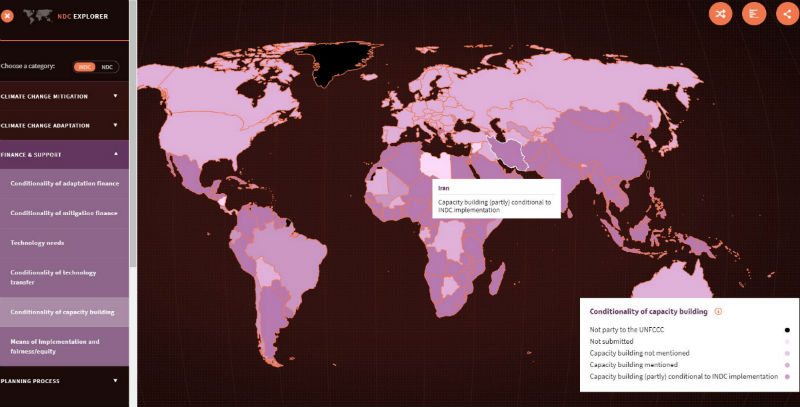
A new interactive online tool that helps countries to access and compare their priorities and ambitions related to climate action plans has been developed.
The Nationally Determined Contributions (NDC) Explorer could contribute to the global climate action in the context of the UN climate negotiations, according to its developers.
In 2013, the parties to the United Nations Framework Convention on Climate Change (UNFCCC), charged member states to formulate action plans to tackle climate change challenges.
The tool – NDC Explorer – resulted from seven-month work of 16 experts and analysts from the German Development Institute (DIE), the African Centre for Technology Studies (ACTS) in Kenya, the Stockholm Environment Institute in Sweden, in cooperation with the UNFCCC secretariat, and supported by the Federal Ministry for Economic Cooperation and Development, according to a statement from DIE last month (16 January).
Visit the Nationally Determined Contributions Explorer
The experts created a database from the (I)NDCs or intended nationally determined contributions and opened it with an interactive online tool.
Pieter Pauw, an environmental scientist at the DIE who led the research team to develop the tool, says in the released statement, “The (I)NDCs are a cornerstone for implementing the Paris Agreement. But apart from countries’ overall mitigation targets, the content of (intended) nationally determined contributions has been unclear – until now.”
Kennedy Mbeva, a research fellow at the ACTS, says their aim was to make the action plans accessible to a wide range of stakeholders through an objective analysis.
The tool, Mbeva tells SciDev.Net, is detailed, especially as regards data and information beyond mitigation such as climate change adaptation, finance, and technology needs and transfer.
“These issues are of critical importance to African countries, which face the twin challenges of development and climate change,” explains Mbeya. “The NDC Explorer also highlights African countries’ priority areas of climate action, thus allowing for targeted initiatives to support these actions. More importantly it goes beyond mitigation to include aspects of adaptation, planning processes and linkages to international debates such as green economy, sustainable development goals (SDGs) and disaster risk management.”
The team focused on the climate action plans until 2030.
The tool allows users to toggle between 163 intended and actual climate plans, thus noting any changes in the two documents for a particular country.
Nicholas Ozor, executive director of the Kenya-based African Technology Policy Studies Network, tells SciDev.Net that the tool could improve transparency and enhance climate change negotiations.
“This tool is important for Africa because it provides vital information that is essential to inform decisions on climate change. A major challenge for Africa has been the lack of climate information database which details information from national to continental level,” Ozor says.
The tool offers opportunity for policymakers, scientists and other actors to gain insights into the status of African countries, sub-regions and the continent as a whole with regards to climate actions, Ozor adds.
This article was originally published by SciDevNet under a CC-BY licence

Rate and Review
Rate this video
Review this video
Log into OpenLearn to leave reviews and join in the conversation.
Video reviews